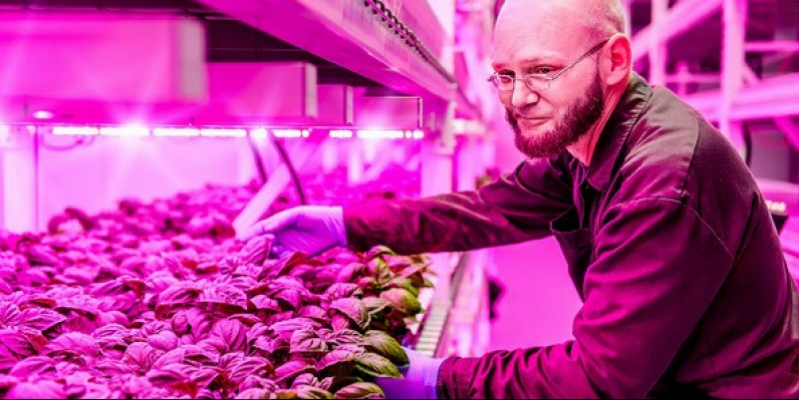This 2.5 million dollar technorojuje governed Sense Green Farms company is crucial to thousands of red and blue-emitting diodes (LEDs). They emit light exactly matches the favorite here cultivated crops - lettuce, kale, basil and chives.
The idea to give the light of day for the sake of imitation is not new. It provides a number of advantages: for example, you do not have to worry about the weather change, not to mention the possibility of growing all night long (although a couple of hours a day to be appointed by the plant equivalent of sleep stresses Gus van der Feltz from Philips). Plant Entrainment inside allows them to care for and otherwise. Water can be continuously re-used, and the sensors can detect any lack of Nutrients and give them small, precise doses.
The LED is much more advanced than traditional fluorescent lamps. First, they are much more efficient, and it helps to save electricity. High efficiency means less heat release, which reduces the cost of air conditioning. Cooler light sources can be positioned closer to the plants that can be planted more densely. The wavelength of light can be adjusted to be crispier lettuce or softer, "says Robert Colangelo'as Green Sense president Farms. Your correspondent tasted sweet soft cabbage leaf, pinch off directly from the plant. They were delicious.
In addition, the plants grow faster. Philips estimates that the use of LED lights in a controlled, enclosed environment, compared with conventional farming, can shorten the development cycle in half.
It can help meet the needs that were previously impossible, fresh, locally grown produce all year round. Hydroponic naturally illuminated greenhouses have been supplying products in Chicago and New York. Green Sense Farms is the first company trying to grow crops, using LEDs, but in spite of their efficiency, energy costs were a challenge. But p. Colangelo is guaranteed. Leda keep getting cheaper, and much of this technology investing Philips participation demonstrates that the costs may decrease.
Such farms are unlikely to be suitable for such crops as corn or potatoes - they are very efficient and growing fields. But if Green Sense Farms prove their commercial value, such farming can spread by growing leafy greens and other high-value crops. The National Climate Assessment indicates American threats to agriculture, such as the increasing number of insects and other pests, and frequent bad weather. Farming under the roof, fortunately, it is resistant to both of these plagues.



